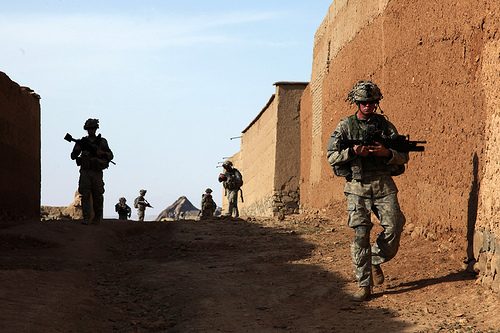War On Terror Requires Shift Towards Direct Action

Counterinsurgency, or COIN, is a strategy where measures are taken by the recognized government to destroy the political authority of an insurgency. It is imperative that the recognized government can win the hearts and minds of the civilian population. In the case of Afghanistan, General Petraeus implemented COIN through the training of Afghan national security forces as well as diplomacy between the Afghan government and rival clans. In theory, COIN would turn the local populace against the Taliban, leaving them nowhere to hide. In practice, counterinsurgency has proven to be relatively ineffective.
In the War on Terror, counterinsurgency is not feasible for a number of reasons. First, the cost of training and maintaining a security force is extremely high with no guarantee of a fair return on investment. With the drawdown of coalition forces in Afghanistan, sustainability of counterinsurgency measures is questionable. Second, there have been occurrences where Afghans turned around and shot their American trainers, which undermines the level of trust needed to conduct joint operations. It is a difficult and time-consuming process to fully vet and verify every recruit who wishes to join the Afghan forces. Simply put, there is no telling which direction a provided gun will be pointed, a risk that the US government cannot afford to take.
Third, the local populace must be able to trust the recognized government and the foreign troops that support it. In the case of Afghanistan, too many Afghans see the US as occupiers. Hamid Karzai’s government has not helped matters by being seen as both inept and corrupt by the local populace. Finally, relying on local informants may prove counterproductive. Similar to the Phoenix Program from the Vietnam War era where the United States relied on local informants, the local populace in Afghanistan is as likely to denounce persons from rival clans as much as real Taliban and terrorist insurgents. Such a practice leads to killing and capture of innocent civilians, which in turn causes more animosity between the local population and Karzai’s coalition-supported government.
On the other hand, direct action has been far more effective. In the Middle East, direct action has taken the form of targeted drone strikes and the use of special operations forces to conduct raids against high-value targets. The most prominent example was the May 2nd raid made by Navy SEALS that ultimately killed Osama bin Laden in Pakistan. In addition, drone strikes have been particularly prolific against Pakistani militants near the mountainous Pakistan-Afghanistan border.
Despite its advantages, direct action is not perfect. Imperfect intelligence has lead to civilian deaths and political condemnation. Violation of state sovereignty is also an issue, an argument Pakistan used to renounce the US raid that killed bin Laden. Others argue that killing the leader of a terrorist organization leads to martyrdom and only sows the seeds for future terrorism.
Nevertheless, direct action is and will be a more effective strategy to combat terrorism. It is not limited by how quickly and effectively a local security force can be trained. Depriving terrorist groups of key leadership prevents them from maintaining the level of organization that made them effective in the past. The Arab Spring has shown that radical terrorist groups are losing influence. Most importantly, direct action avoids the difficult and costly issue of battlefield loyalty.
As the nature of war changes to more low-intensity conflict, the United States’ armed forces must evolve as well. The enemy threat is no longer based in one country but in many. As such, the US must be able to operate anywhere in the world at a given moment. Conventional forces and counterinsurgency is out. Direct action is in.



